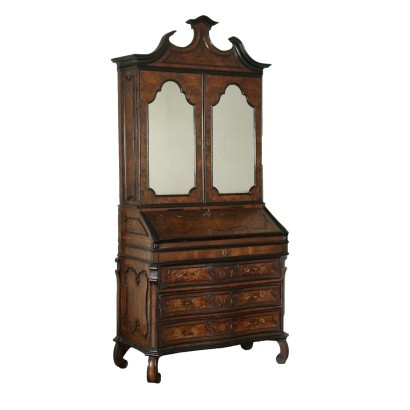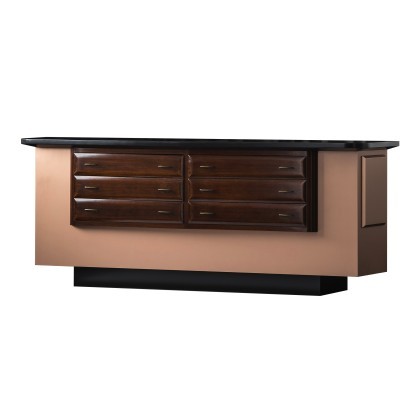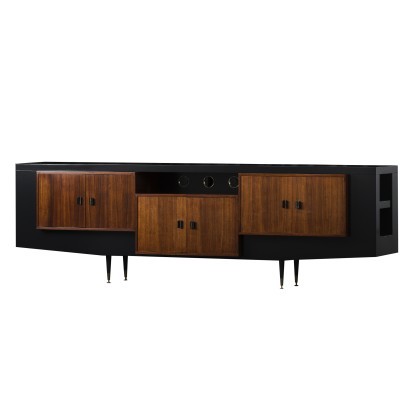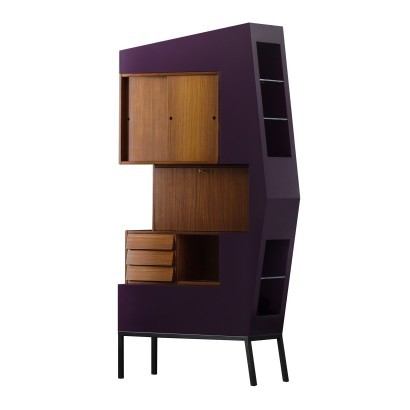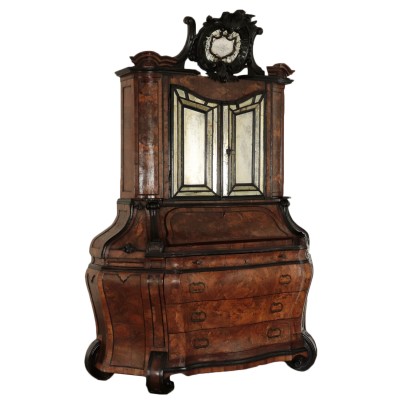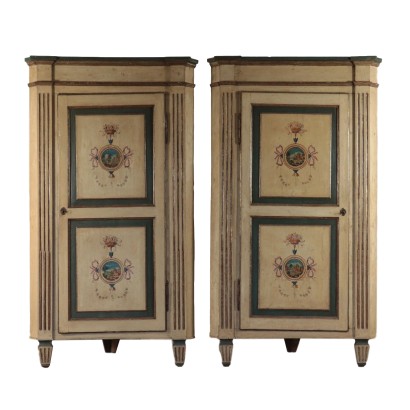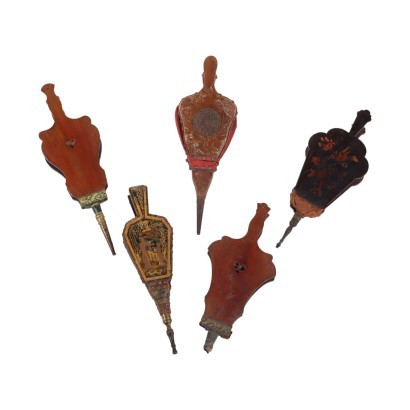Trumeau Barocchetto Walnut Poplar Mirror Lombardy Italy Mid 1700
Features
Style: Barocchetto (1720-1770)
Age: 18th Century / 1701 - 1800
Origin: Lombardia, Italy
Material: Paper , Walnut Burl Veneer , Mirror
Description
Lombard Barocchetto trumeau, supported by curled feet, on the front, curved like a crossbow, it has three drawers plus one with a straight front placed in the upper band, surmounted by an opening flap door concealing a cabinet with a slightly curved chest of drawers; the sides are curved like a crossbow as well and open on the bottom. The upper body has two doors with mercury mirrors and ends with a shaped cymathium. Veneered in walnut and walnut burl, it is decorated with characteristic wavy and ebonized frames; the poplar interiors are covered with a hand-painted paper with landscapes, from the late 19th century.
Product Condition:
The item shows signs of wear due to age. Any damage or loss is displayed as completely as possible in the pictures. It may require restoration and recovery of french polish. Product with a Certificate of Authenticity and Lawful Origin.
Dimensions (cm):
Height: 244
Width: 145
Depth: 57,5
Additional Information
Style: Barocchetto (1720-1770)
With this term we designate, for what specifically relates to furniture, a part of the production carried out in Italy in the period of time between the Rococo era and the first phase of neoclassicism.It is characterized by the formal and decorative structure still rigidly adhering to the dictates dear to the Baroque period (hence the term baroque) and to the Louis XIV fashions and yet the new times are captured in the adoption of smaller volumes, more decorative modules. elegant, often directly inspired by French fashion, but always executed with rigorous principles of ornamental symmetry.
The tendency to assimilate formal and volumetric novelties but not to incorporate their ornamental elaboration finds natural explanation in Italy in the fact that in this century the great aristocracy experienced an unstoppable political and economic decline.
If in the previous century there was a great profusion of furnishings destined to adorn newly built homes, to proudly show the power of the client family, in the eighteenth century they rather take care to update the building with only the furniture strictly necessary for the new needs imposed by fashion or functional needs.
The old scenographic apparatus is maintained and the new must not contrast too much.
Find out more about the Barocchetto with our insights:
Classic Monday: discovering Barocchetto
Classic Monday: between Baroque and Barocchetto
Classic Monday elegant and unusual with two Barocchetto balustrades
FineArt: Pair of Barocchetto chairs, Venice
Emilian canterano first quarter XVIII century, first Barocchetto
Ribalta a urn, Milan mid-18th



